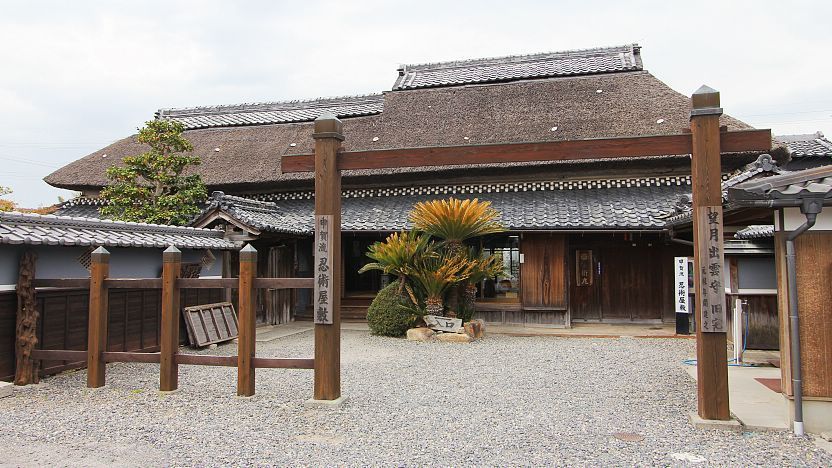On a moonless night in 16th-century Japan, a small village nestled in the Iga mountains suddenly fell silent. The wind carried no sound of footsteps, but its people could feel a presence – an invisible force moving through the darkness. They didn’t know that elite warriors, clad in black, had already infiltrated their homes, scaling walls and bypassing guards. Critical political documents had vanished by morning, but no bodies were left behind. These invisible agents of chaos, bound by loyalty to a single clan, had completed their mission. This was the work of the House of Ninjas, a shadowy, elusive group whose expertise in espionage and sabotage left an indelible mark on Japan’s history.
For centuries, the term “ninja” has conjured images of assassins wielding throwing stars and disappearing into smoke clouds. But the true story of the ninja is more complex. Far from mythical mercenaries, ninjas were highly skilled spies and strategists trained in stealth, survival, and unconventional warfare. As it is often romantically referred to today, the House of Ninjas was less of a single household and more of a secretive network of families, particularly in the Iga and Kōka regions, bound by a code of secrecy and discipline.
The Origins of Ninjas
Ninjas, or “shinobi” as originally called, have their roots in feudal Japan, particularly during the Sengoku period (1467–1603), when civil wars and political intrigue were rampant. The term “ninja” didn’t come into wide usage until much later in history; during their heyday, shinobi were trained in various skills, including espionage, sabotage, and assassination. The word “ninja” (忍者) is derived from the characters “nin” (忍), meaning “to endure or conceal,” and “ja” (者), meaning “person.” These warriors were trained to outthink and outmanoeuvre their opponents, often performing tasks that samurai, bound by the Bushido code, found beneath their honour.
Most historical ninjas came from the Iga Province (modern-day Mie Prefecture) and the Kōka region (Shiga Prefecture). These areas were mountainous and isolated, making them ideal for cultivating a community of highly skilled warriors specialized in guerrilla warfare and espionage. This network of ninja families passed their knowledge from generation to generation, operating like a secret society.
Citing Historical Sources
One of the primary sources of historical information about the ninjas comes from the Bansenshūkai, a 17th-century document that outlines many techniques and philosophies attributed to ninjas. This compilation, written by Fujibayashi Yasutake in 1676, is one of the most comprehensive texts on ninjutsu (the art of being a ninja). It outlines skills in disguise, escape, meteorology, and cryptography, among other things. For many scholars, the Bansenshūkai is a cornerstone in understanding how ninja warfare operated (Turnbull, 2012).
Reference:
- Turnbull, S. (2012). Ninja: Unmasking the Myth. Frontline Books.
Skills and Training of the Ninjas
Members of the House of Ninjas were often trained from childhood, learning a wide range of skills far beyond physical combat. While martial arts played a part in their education, they were primarily trained in survival skills, stealth, and deception. Some of the key skills that defined a ninja’s training included:
- Espionage: Ninjas were masters of infiltration and intelligence-gathering. They could blend into enemy territories disguised as monks, merchants, or farmers, collecting vital information without drawing attention.
- Guerrilla Warfare: Unlike the samurai, who fought with honour in open battle, ninjas excelled in unconventional tactics. This included ambushes, hit-and-run tactics, and the use of traps. Ninjas often worked alone or in small groups, using the environment to their advantage.
- Camouflage and Disguise: Ninjas were adept at blending into their surroundings. They would use black clothing (called “shinobi shōzoku”) during night missions or don other disguises to remain undetected during the day.
- Survival and Escape Techniques: Ninjas were survivalists. They had to live off the land, knowing how to find food and water and navigate rugged terrain without being caught.
- Psychological Warfare: Ninjas were also experts in sowing fear and confusion. They used misinformation, false rumours, and psychological manipulation to weaken their enemies.
Famous Ninjas and the Legacy of the House of Ninjas
The House of Ninjas was not a single dynasty but a collective of clans and families. However, there were some notable figures in ninja history, including Hattori Hanzō, who is perhaps one of the most famous ninjas due to his service to Tokugawa Ieyasu, the founder of the Tokugawa Shogunate.
- Hattori Hanzō: Originally from the Iga region, Hanzō is often romanticized as the quintessential ninja. He served Tokugawa Ieyasu, one of Japan’s greatest shoguns, and helped him escape assassination attempts during turbulent times. Although his role has been exaggerated in popular culture, Hanzō remains a symbol of ninja skill and loyalty (Turnbull, 2012).
The Downfall of the House of Ninjas
By the Edo period (1603–1868), Japan entered a period of peace under Tokugawa Ieyasu’s rule, and the demand for ninjas dwindled. Many ninja families either disbanded or transitioned into other professions, including bodyguard work and law enforcement. Some ninja skills were integrated into the samurai training, further blurring the lines between these two classes of warriors. However, the legend of the ninja only grew stronger over time, as tales of their exploits became more embellished with each retelling.
Reference:
- Turnbull, S. (2012). Ninja: Unmasking the Myth. Frontline Books.
Ninja in Modern Popular Culture
In modern times, the ninja has become a global cultural icon. From books and movies to video games and television shows, ninjas are often portrayed as highly skilled assassins with almost supernatural abilities. Popular franchises like Naruto and Teenage Mutant Ninja Turtles have brought the idea of the ninja to Western audiences, though often in a highly fictionalized form. While these representations capture the imagination, they usually stray far from the historical reality of the House of Ninjas.
Nevertheless, the core aspects of ninjas—stealth, strategy, and survival—have remained consistent in these portrayals. Whether they are sneaking through castles in ancient Japan or fighting alien invaders in the streets of New York, the image of the ninja continues to captivate audiences worldwide.
Conclusion: The Enduring Mystery of the House of Ninjas
The House of Ninjas may no longer exist in the form it once did, but its legacy lives on. While much of the truth about these shadow warriors remains in mystery, what we know points to a group whose discipline, cunning, and tactical brilliance shaped the course of Japanese history. Even today, in a world fascinated by espionage and strategy, the ninja is a timeless symbol of the power of stealth and intelligence over brute force.
As history blends into legend and legend into myth, the House of Ninjas remains one of the most enduring and enigmatic legacies of feudal Japan. Whether they are seen as heroes or villains, their influence on warfare, culture, and modern entertainment cannot be denied.
















